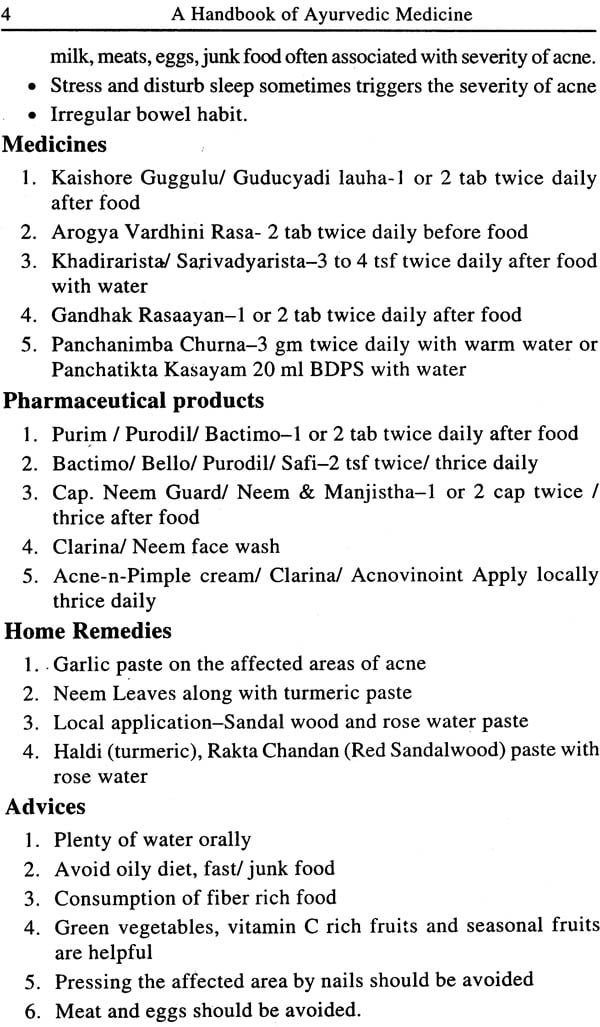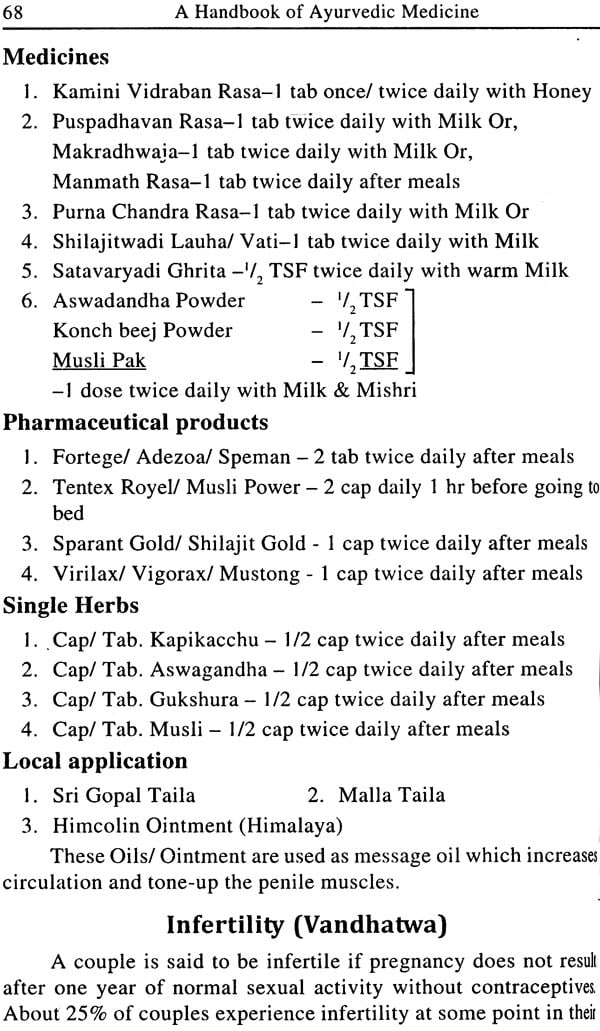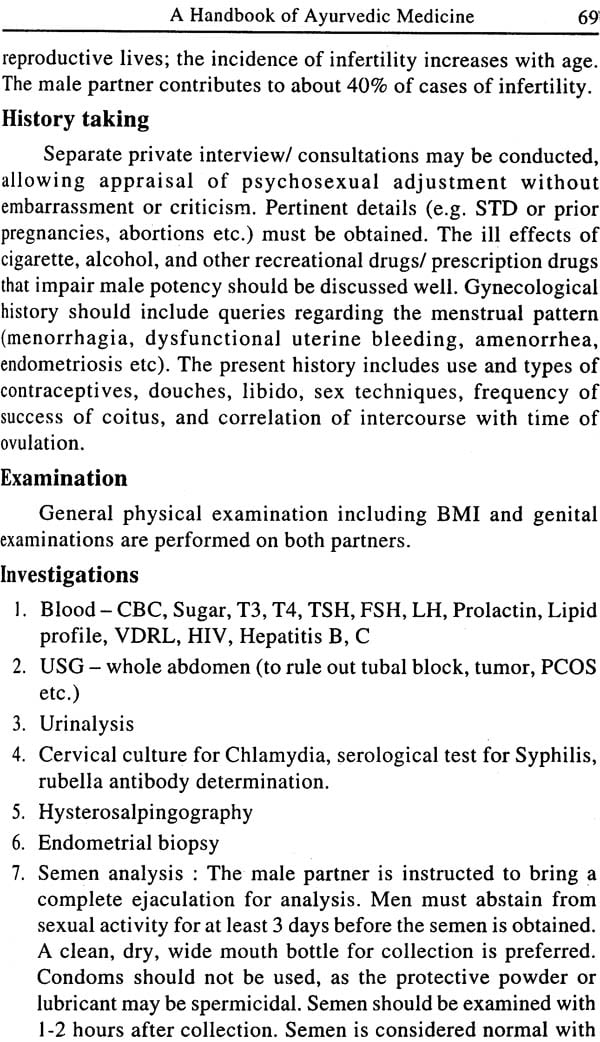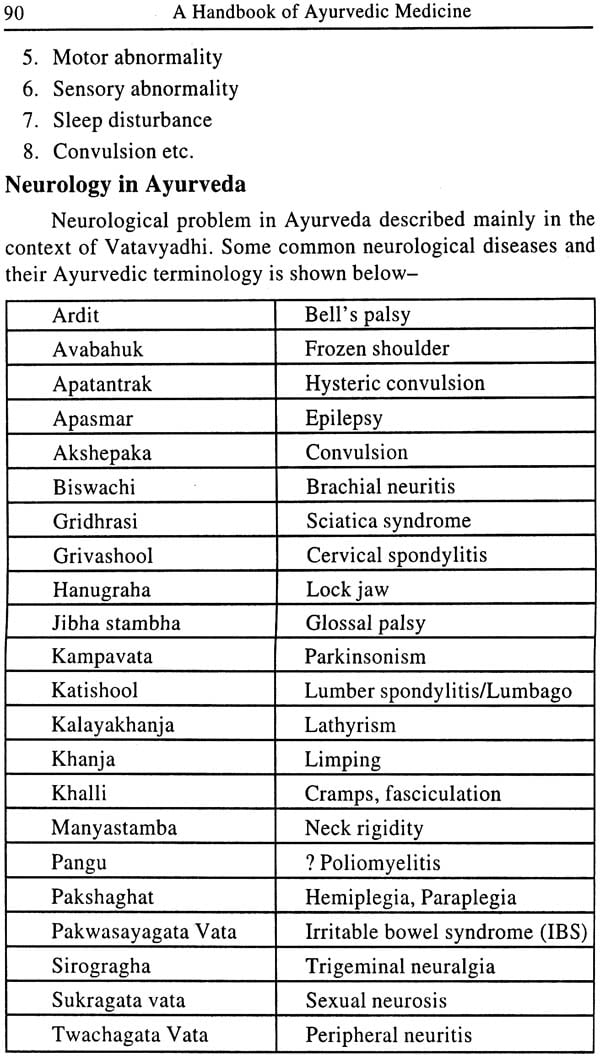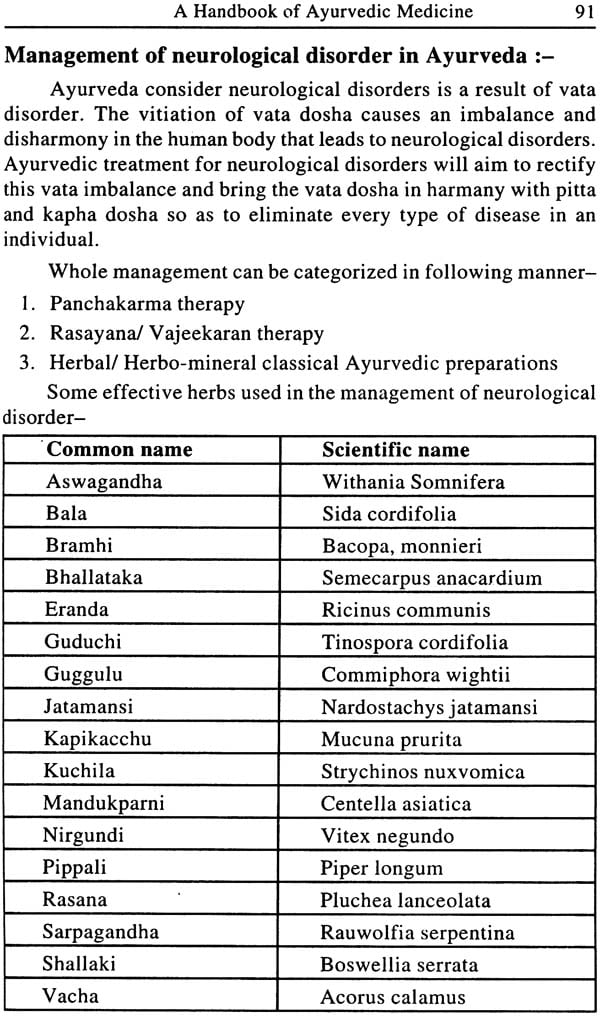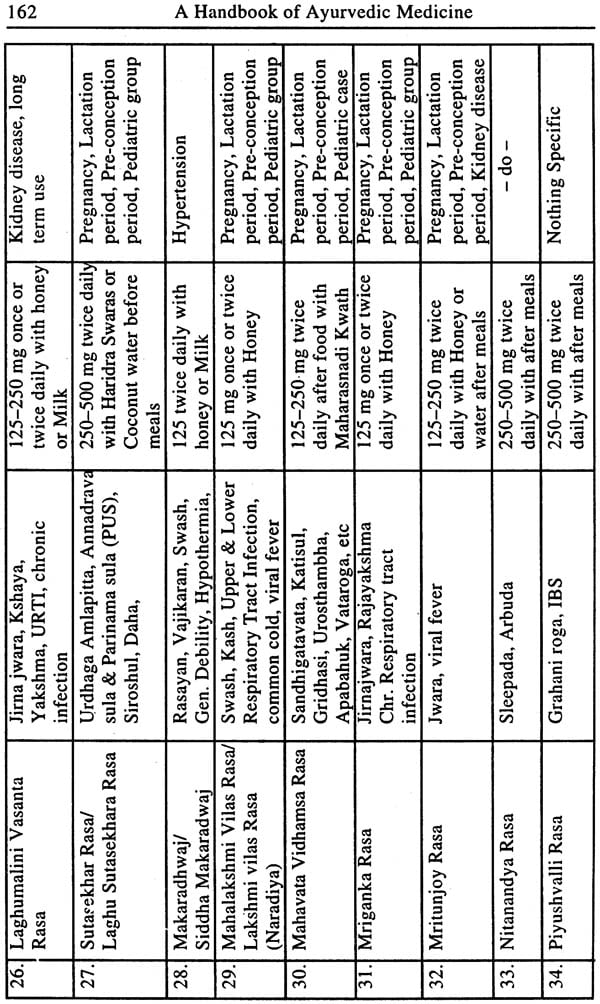
A Hand Book of Ayurvedic Medicine
Book Specification
| Item Code: | NAM006 |
| Author: | Dr. Bishnu Choudhary |
| Publisher: | CHAUKHAMBHA ORIENTALIA, Varanasi |
| Language: | English |
| Edition: | 2016 |
| ISBN: | 9788176373647 |
| Pages: | 184 |
| Cover: | Paperback |
| Other Details | 8.5 inch x 5.5 inch |
| Weight | 200 gm |
Book Description
This book is an attempt to provide a handy knowledge about Ayurvedic concept along with standard treatment with specific Ayurvedic Medicines (Classical & Pharmaceutical) of some diseases commonly found in clinical practice along with modern diagnostic procedures to fulfill the need of medical professional. Home remedies for various ailments have been described and also listed some essential classical Ayurvedic medicines and their specific uses in different diseases along with standard dosages, contraindication/pre- caution.
Dr. Bishnu Choudhury was born in district Dhubri (Assam) in the year 1980.
Academic Qualification
1. Graduation in Ayurveda (BAMS) from Gauhati University, Guwahati in 2004.
2. Post Graduation in Ayurveda (M.D. Ay)from Gauhati University, Guwahati in 2009.
3. Ph.D. from Gauhati University, Guwahati in 2015.
Field of Specialization Kayachikitsa (General Medicine).
Experiences
1. Senior House Physician at Govt. Ayurvedic College & Hospital, Guwahati, Assam.
2. Medical Officer (Ay) under NRHM, Assam.
3. Senior Research Fellow (SRF)(Ay) under CCRAS (NEIARI, Guwahati).
4. Medical Officer (Ay) at North Eastern Institute of Ayurveda & Homoeopathy, Shillong (under Ministry of AYUSH, Govt. Of India) since 2012 till date.
Book Publication
1. A Handbook of Ayurvedic Medicine 2015.
2. Diabetes Mellitus in Ayurveda-2015.
Other Publications
1. Several papers published in National and International level journals.
2. Presented several Research papers in National and International Seminars, delivered guest lectures.
3. Editor of “AYUHOM” A Research Journal Published from North Eastern Institute of Ayurveda & Homoeopathy, Shillong (Under Ministry of AYUSH, Govt. Of India).
4. Regular publication of Health related articles in local news papers in Regional language.
Ayurveda perceives life as a four dimensional entity i.e. Ayu, the living entity which is the sum total of Sharira (Body), Indriya (Senses), Satwa (Psyche) and Atma (Soul). Life is regarded as a constant and continuous union and conjunction of Sharir, Indriya, Satva and Atma. These four components of Ayu interplay to keep the human body functional. The synonyms of Ayu are Nityaga, Dhari, Jeevitam and Anubandha. Nityaga signifies continuation of consciousness. Dhari means the factor that prevents the body from decay. Jeevitam represents the act of keeping alive. Anubandha means which transmigrates from one body to another. According to Ayurveda, One whose physiological functions (doshas), metabolism (agni), body tissues (dhatus) and excretory functions (malas) are in a state of equilibrium along with cheerful mind, clarity of intellect and contented senses is said to be established in oneself (swastha). Health or swasthya is therefore defined by Ayurveda as a state of equilibrium, of body & mind. It is state of equilibrium of normal anatomical, biological, physiological, mental and spiritual well-being. Hence Sama (balanced) state of dhatu, dosha, Agni, and mala is the reflection of Homeostasis in Ayurveda. In holistic approach of Ayurveda, the body, mind and soul are the subjects of consideration. Holistic approach in medical practice enables upholding all aspects of people’s needs as a whole. I.e. Psychological, physical and social aspects.
Health is not static but a dynamic state that is continually changing as a person adapts himself to the variations in the external and internal environments to maintain a state of physical, emotional, intellectual, social and spiritual well-being. The holistic approach in Ayurveda focuses on integrated well-being of an individual by addressing all dimensions of sustenance.
Ayurveda is complete life sciences which aims at getting to the root of the problem and resolve the same by adopting a holistic approach and not just offering symptomatic relief. The principle goal of Ayurveda is preservation and promotion of health after removal of causative factors of disease. Due to its contemporary approach to treat the disease the world is looking at this science with a hope to get remedies of health problems, specially the metabolic disorder, autoimmune and chronic diseases.
Ayurveda is a natural therapy prevailing since time immemorial. As a result of proper scientific research being carried out, the acceptance of Ayurvedic treatment and phyto-therapy in the world is increasing day-by-day. Ayurveda is practiced worldwide in different forms.
The people all over the world are now attracted towards the Ayurvedic treatment to avoid side effects of chemical and synthetic compounds. The last few decades have witnessed such rapid advances and revolutionary changes in our concepts of medical subjects, that the need for a complete reorientation of our ideas in the light of these recent advances has been felt for some time. People are now curious to know about Ayurveda and its scope in the management of different ailments.
This book is an attempt to provide a handy knowledge about Ayurvedic concepts and aspects of preventive and curative treatment of some diseases commonly found in clinical practice along with modern diagnostic procedures to fulfil the need of medical professional. Home remedies for various ailments have also been included for the benefit of common people. Also described some essential classical Ayurvedic medicines and their specific uses in different diseases.
The material of this book has been collected from various Ayurvedic classics/books and modern medical science as well from self experience.
In Ayurvedic classics all the nomenclature, clinical features, treatment etc. are written in Sanskrit. However in this book, for the benefit of readers, clinical features etc. are described in modern medical terminology so that diseases and treatment are understood clearly.
In treatment part many choices of drugs or combination of drugs are described which are useful in management of the disease. Out of the drugs mentioned any one of the drugs or in the combination may be prescribed by the physician. Physician should decide the dosages and duration of the therapy based on the clinical finding and response of the individual patient to therapy.
It is expected that this book will help the people interested in this field, to find a cure for disease and thus Ayurveda may contribute the required relief to the suffering humanity.
| Acne vulgaris (Yuvan Pidika) | 3 |
| Acid Peptic Disorder/Hyperacidity (Amlapitta) | 5 |
| Allergic Rhinitis (Pratisaya) | 6 |
| Amenorrhea (Anartava) | 8 |
| Anal Fissures (Parikartika) | 10 |
| Ascites (Jalodar) | 12 |
| Benign Prostatic Hyperplasia (Asthila) | 15 |
| Bronchial Asthma (Tamak Swash) | 16 |
| Chronic Kidney Disease/Chronic Renal Failure | 19 |
| Constipation (Vibandha) | 21 |
| Dengue | 24 |
| Diabetes mellitus (Madhumeha) | 25 |
| Dysfunctional Uterine Bleeding (DUB/Rakta Pradar) | 31 |
| Dysmenorrhea (Kastartava) | 33 |
| Dysentery (Pravahika) | 35 |
| Eczema (Vicharchika) | 37 |
| Facial paralysis/Bell's palsy (Ardita) | 38 |
| Falling of haif &Graying of Hair (Khalitya & Palitya) | 40 |
| Fistula-in-Ano (Bhagandar) | 44 |
| Gouty Arthritis (Vata Rakta) | 46 |
| Headache (Shiroshool) | 49 |
| Hemiplegia/Paralysis (Pakshaghat) | 52 |
| Hemorrhoid/Piles (Arsha) | 54 |
| Hypertension (Raktavata/Vyan Vala Vaishmya) | 57 |
| Impotency (Male Erectile & Sexual Dysfunction) | 65 |
| Infertility (Vandhatwa) | 68 |
| Influenza (Viral fever) | 71 |
| Insomnia (Sleeplessness/Anidra) | 72 |
| Irritable Bowel Syndrome (IBS) | 74 |
| Jaundice (Kamala) | 75 |
| Leucorrhea (Sweta Pradar) | 79 |
| Malaria (Visam Jwara) | 81 |
| Menopausal Syndrome (Rajonibriti janna Roga) | 84 |
| Nephrotic Syndrome (Jeerna Vrikka Sotha) | 85 |
| Nocturnal Emissions (Swapna Dosh) | 87 |
| Neurological Disorder | 88 |
| Obesity (Sthaulya) | 96 |
| Osteoarthritis (Sandhivata) | 98 |
| Osteoporosis (Asthikshaya) | 101 |
| Peptic Ulcer Syndrome (Annadravya & Parinam Shool) | 104 |
| Pharyngitis (Kasa) | 106 |
| Polycystic Ovary Syndrome (PCOS) | 108 |
| Psoriasis (Kitibha) | 109 |
| Rheumatoid Arthritis (Amavata) | 112 |
| Sciatica (Gridhashi) | 115 |
| Sinusitis (Suryavarta) | 117 |
| Tonsillitis (Tundikari Sotha) | 120 |
| Typhoid Fever (Antrik Jwara/Sannipatik Jwara) | 122 |
| Urinary Tract Infection (UTI)/Mutrakriccha | 123 |
| Urinary Stone/Renal Stones (Mutra Ashmari) | 125 |
| Urticaria (Sheetapitta, Udard & Kotha) | 128 |
| Worms Infestation (Helminthiasis)/(Krimi Roga) | 131 |
| Dosages of Ayurvedic Medicines | 135 |
| Some Essential Ayurvedic Medicines & their uses | 137 |
| Some Important Medicinal Plants and their uses | 169 |

